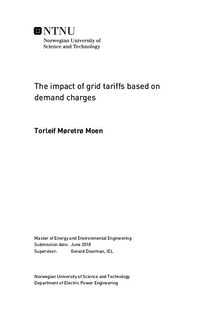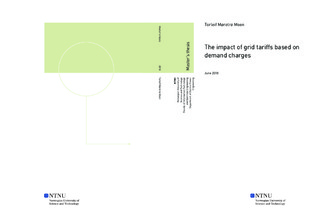| dc.description.abstract | In recent years, there has been an increase in power consumption for the consumers in the distribution grid. The consequence of this, combined with the consumers being inelastic, has forced the distribution system operators and transmission system operator to invest in the power grid system. To delay or scrap the investments, the Norwegian Water Resources and Energy Directorate (NVE) has proposed to change the current grid tariff, the energy tariff, to a new power based grid tariff named the subscription tariff.
In this thesis, an analysis of the subscription tariff is presented. Also, an analysis is conducted to find the ideal excess demand with the other parts of the subscription tariff given. Two alternatives for the subscription fee is then presented, and the excess demand fee is found for both of these. Further, an analysis is conducted on each alternative, and the ideal subscription fee is chosen to be 60 [NOK/kW/month] based on the analysis, and is used subsequently throughout the thesis. The ideal subscription tariff is then applied to move the consumption for each consumer. A reduction of 6.35% between the original and moving scenario is obtained.
The reduction is then used for further analysis with the EMPS model. The firm power profile - "fastkraftprofilen"- is used to gain a similar decrease in general supply for the EMPS model. To achieve 6% reduction in peak load, the profile is flattened out with 40%. An analysis of the EMPS model is then performed, where two scenarios are presented, the original EMPS firm power profile and the 40\% reduced firm power profile. The analysis concludes that the peak is reduced by 6%, which is the same as for the load data set. For the socio-economic perspective, the moving of the consumption gives a surplus for the whole system, while for Norway there is a loss. This is due to the producers losing more than the consumers are gaining. The thesis also follows the change in economic and demand for a consumer, where the reduction in grid tariff is -10% for all consumers when moving the consumption. | |

